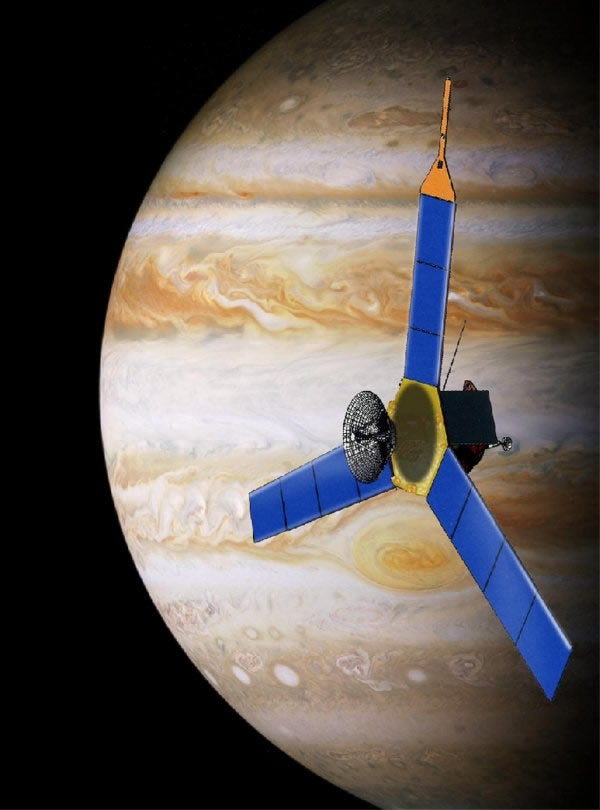NASA is officially moving forward on a mission to conduct an in-depth study of Jupiter.
Juno will be the first mission in which a spacecraft enters a highly elliptical polar orbit around the giant planet to understand its formation, evolution, and structure. Underneath its dense cloud cover, Jupiter safeguards secrets to the fundamental processes and conditions that governed our early solar system.
“Jupiter is the archetype of giant planets in our solar system and formed very early, capturing most of the material left after the Sun formed,” said Scott Bolton, Juno principal investigator from the Southwest Research Institute in San Antonio. “Unlike Earth, Jupiter’s giant mass allowed it to hold onto its original composition, providing us with a way of tracing our solar system’s history.”
The spacecraft is scheduled to launch aboard an Atlas rocket from Cape Canaveral, Florida, August 2011, reaching Jupiter in 2016. The spacecraft will orbit Jupiter 32 times, skimming about 3,000 miles (4,828 kilometers) over the planet’s cloud tops for approximately 1 year. The mission will be the first solar-powered spacecraft designed to operate despite the great distance from the Sun.
“Jupiter is more than 400 million miles from the Sun, or five times further than Earth,” Bolton said. “Juno is engineered to be extremely energy efficient.”
The spacecraft will use a camera and nine science instruments to study the hidden world beneath Jupiter’s colorful clouds. The suite of science instruments will investigate the existence of an ice-rock core, Jupiter’s intense magnetic field, water and ammonia clouds in the deep atmosphere, and explore the planet’s aurorae.
Understanding Jupiter’s formation is essential to discovering the processes that led to the development of the rest of our solar system and what conditions led to Earth. Similar to the Sun, Jupiter is composed mostly of hydrogen and helium. A small percentage of the planet is composed of heavier elements. However, Jupiter has a larger percentage of these heavier elements than the Sun.
“Juno’s extraordinarily accurate determination of the gravity and magnetic fields of Jupiter will enable us to understand what is going on deep down in the planet,” said Dave Stevenson, co-investigator at the California Institute of Technology in Pasadena, California. “These and other measurements will inform us about how Jupiter’s constituents are distributed, how Jupiter formed and how it evolved, which is a central part of our growing understanding of the nature of our solar system.”
Deep in Jupiter’s atmosphere, under great pressure, hydrogen gas is squeezed into a fluid known as metallic hydrogen. At these great depths, the hydrogen acts like an electrically conducting metal, which is believed to be the source of the planet’s intense magnetic field. Jupiter also may have a rocky solid core at the center.
“Juno gives us a fantastic opportunity to get a picture of the structure of Jupiter in a way never before possible,” said James Green, director of NASA’s Planetary Division at NASA Headquarters in Washington. “It will allow us to take a giant step forward in our understanding on how giant planets form and the role that plays in putting the rest of the solar system together. “










